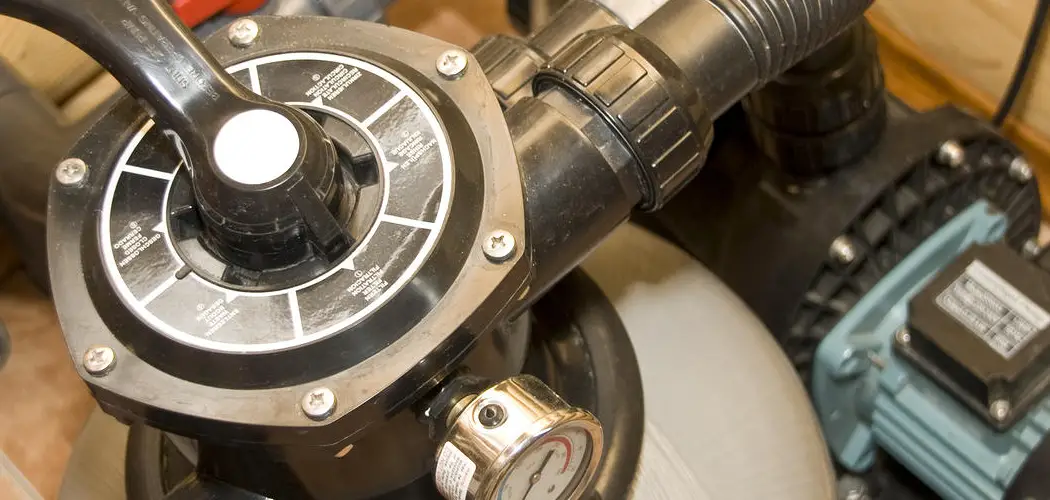Preparing your pool for winter involves more than simply covering it up—special attention must be given to your pool equipment, particularly the sand filter.
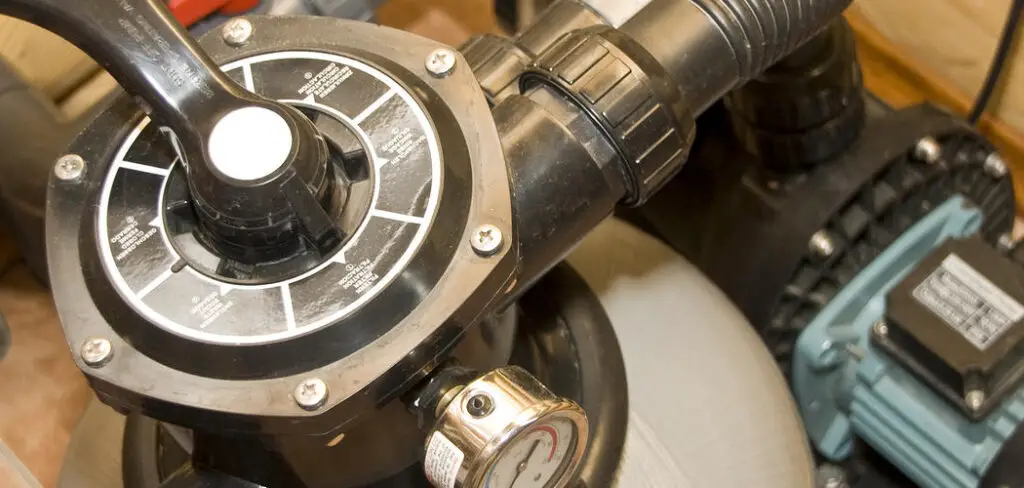
A pool sand filter works hard to keep water clean during the swimming season, but failing to winterize it properly can lead to significant damage, reduced efficiency, and costly repairs. With freezing temperatures, residual water inside the filter can expand, causing cracks or internal damage.
This guide will walk you through how to winterize a pool sand filter, ensuring it remains in excellent condition during the off-season and is ready to operate smoothly when warmer weather returns. By following these simple steps, homeowners can protect their pool equipment and avoid springtime headaches.
Understanding Your Pool Sand Filter
What Is a Sand Filter?
A sand filter is an essential part of many pools, designed to trap dirt, debris, and contaminants as water cycles through. Inside the tank, sand acts as a natural filtration medium, capturing particles and delivering clean water back to the pool. Key components of a sand filter include the tank itself, the multiport valve, and the laterals at the bottom that distribute water evenly during filtration.
Why Winterizing Matters
Without proper winterization, water left in the filter system can freeze, potentially cracking the tank or damaging internal parts like the laterals. Additionally, sand left to sit without cleaning can clump or harden, impairing its ability to filter effectively when the pool reopens. Taking preventative steps now will extend your filter’s lifespan and reduce maintenance costs in the long term.
Tools and Materials Needed for Winterizing
Essential Tools
Having the right equipment makes the winterizing process easier and more effective. You’ll need:
- Wrench or Screwdriver: For loosening screws and clamps.
- Hose or Wet/Dry Vacuum: To remove residual water from the filter.
- pH Balancers and Chlorine Reducers: To balance the water chemistry before winterizing.
Optional Items
Some additional tools can enhance the winterizing process:
- Air Compressor: For blowing out water in the system and pipes.
- Lubricant for O-Rings: Helps protect seals from cracking during cold months.
- Protective Cover: Shields the sand filter from exposure to harsh weather.
Preparing the Pool System for Winterizing
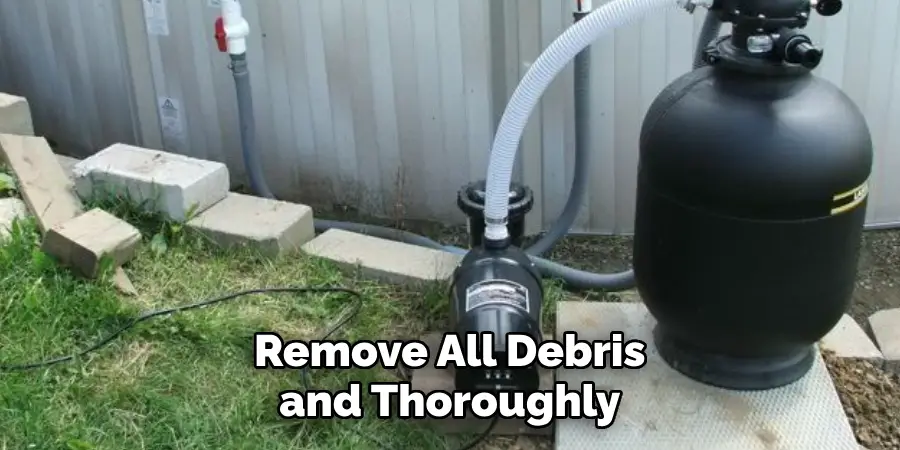
Pre-Winterizing Pool Essentials
Before tackling the sand filter, ensure the pool itself is ready:
- Clean the Pool: Remove all debris and thoroughly vacuum the water.
- Adjust Water Chemistry: Balance the pH level to between 7.2 and 7.6, and lower the chlorine to prevent staining or scaling while the pool is not in use.
Shutting Off Pool Equipment
Turn off the pump, heater, and all other electrical components connected to your pool. This step ensures safety and prevents accidental operation during the winter months. For added protection, unplug hardware or switch off the circuit breaker.
How to Winterize a Pool Sand Filter: Draining Water from the Sand Filter
Locating the Drain Plug
The drain plug is typically found at the base of the sand filter tank. Its purpose is to release water from within the filter before freezing temperatures hit.
Draining the Tank Completely
Steps to Remove Water From the Tank
- Twist open the drain plug to allow water to flow out.
- Tilt the tank slightly to ensure all water exits completely.
Using a Wet/Dry Vacuum for Residual Water
If tilting the tank isn’t enough, use a wet dry vacuum to suction out any remaining moisture. Leftover water—no matter how minimal—can freeze and cause internal damage.
Removing Associated Hoses and Plumbing
Carefully detach pipes and hoses connected to the multiport valve. Inspect for any signs of wear or cracking, as damaged components should be replaced before spring. Store these accessories indoors to protect them from weather exposure.
Cleaning the Sand Filter System
Flushing Out Debris
Backwashing the sand filter is an important step in clearing it of debris. Switch the multiport valve to “backwash” and run the pump until the discharged water is clear. Follow up with the “rinse” setting to ensure no debris or cloudy water recirculates.
Checking Sand Condition
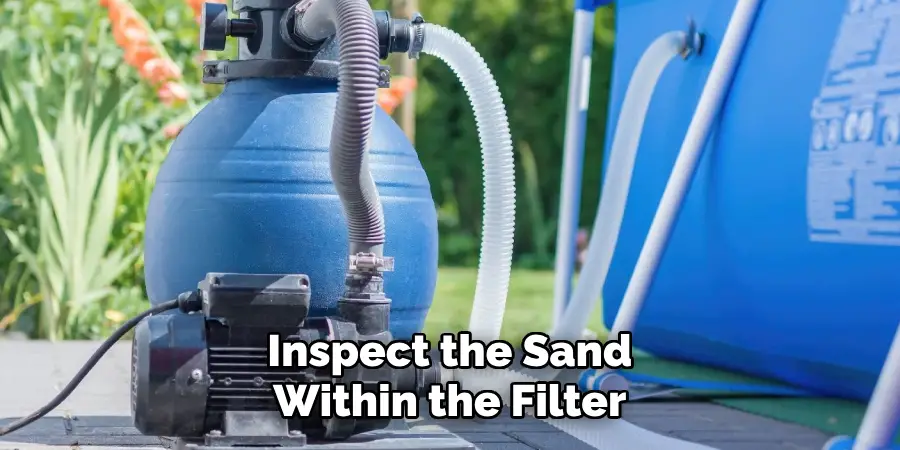
Inspect the sand within the filter for clumps or discoloration, which indicates it may need replacing. Pool filter sand typically lasts 3–5 years, but should be swapped sooner if it becomes ineffective. Adding fresh sand ensures optimal performance next season.
Securing the Multiport Valve
Setting the Valve Properly
The multiport valve should either be set to “winterize” (if available) or left in an open position to allow airflow. Do not leave it in a locked or sealed position, as this could cause pressure build-up and damage if any water remains inside.
Lubricating Seals and O-Rings
Apply a silicone-based lubricant to the O-rings on the valve and housing. This prevents the seals from drying out, cracking, or losing functionality over time. Check for worn or damaged seals during this step and replace them if necessary.
Adding Final Protective Measures
Using Anti-Freeze for Additional Protection
Depending on your climate, adding pool-safe anti-freeze to the pipes connected to the sand filter may be necessary. To apply, disconnect the plumbing lines and pour the antifreeze into the pipes to prevent freezing in extreme conditions.
Covering the Sand Filter
Place a weatherproof cover over the sand filter to shield it from rain, snow, and UV damage. Ensure it’s secured tightly to withstand strong winds while still allowing for adequate ventilation.
Inspecting and Storing Accessories
Removing and Storing Hoses and Attachments
Disconnect any detachable equipment, including hoses and fittings, and store them in a dry indoor location. Prolonged exposure to freezing weather can cause these accessories to crack or warp.
Reviewing the Entire Filtration System
Inspect the sand filter system one last time to confirm all components are in good condition. Clear away leaves, dirt, or debris from the surrounding area to keep the filter clean and undisturbed during the winter months.
Common Mistakes to Avoid
Skipping Drain Plug Removal
Leaving water inside the filter is one of the most common winterizing mistakes. Even small amounts of residual water can freeze, expand, and damage the tank or internal components.
Overlooking Multiport Valve Settings
Failing to open the valve or set it to “winterize” can cause pressure to build and damage seals or internal parts.
Not Cleaning the Filter Properly
Neglecting to clean the sand before winter can lead to clumps forming inside the tank, making spring start-up more difficult and reducing the filter’s overall lifespan.
Not Checking and Adjusting Water Chemistry
Many people assume that since they are not using their pool during the winter, water chemistry does not need to be monitored or adjusted. This misconception can lead to problems in the spring when opening the pool.
Benefits of Winterizing a Pool Sand Filter
Extending Equipment Lifespan
Properly winterized sand filters are protected from the freeze-thaw cycle, which can cause cracks and leaks. This preventative measure ensures the filter operates efficiently for many years.
Saving Time During Spring Opening
A clean, well-maintained sand filter requires minimal work when reopening the pool in spring. By addressing issues beforehand, you can avoid extensive cleaning or repairs.
Preventing Algae Growth
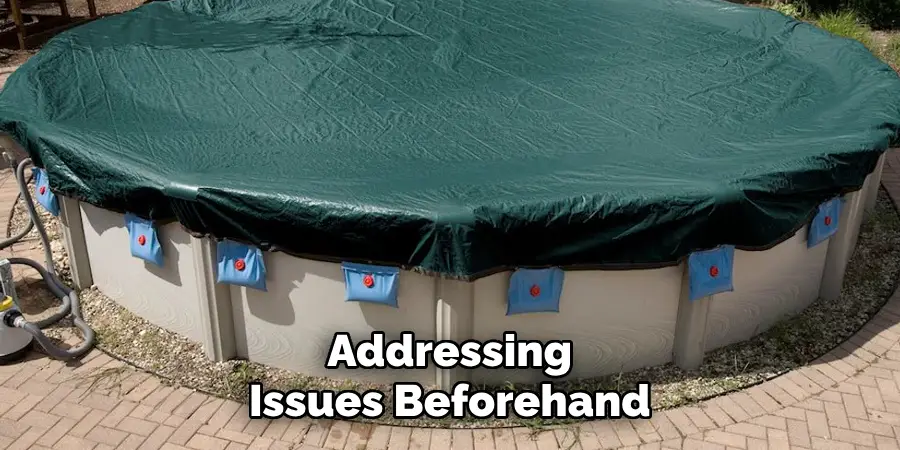
Algae growth is one of the biggest concerns in an unmaintained pool. Winterizing a sand filter helps prevent algae from growing, keeping your water clear and hygienic.
Cost Savings
Taking care of your pool equipment before winter sets in can save you money on costly repairs or replacements down the road. It also reduces the need for excessive chemicals to fix any issues that may arise due to neglect.
Frequently Asked Questions About Winterizing a Pool Sand Filter
Why Is Winterizing a Sand Filter Necessary?
Winterizing prevents damage caused by freezing temperatures, which can crack the filter and compromise its efficiency. It also ensures a smoother pool reopening process in the spring.
When Should I Winterize My Pool Sand Filter?
It is recommended to winterize the sand filter before the first frost of the season. This typically occurs in late fall, depending on your region’s climate.
Can I Winterize the Sand Filter Myself?
Yes, with proper guidance and tools, most pool owners can winterize their sand filters. However, if you are unsure, consulting a professional is always a good idea.
What Happens If I Don’t Winterize My Sand Filter?
Failure to winterize can lead to costly damage, such as cracked equipment, leaks, or clogged filters, potentially resulting in more labor-intensive repairs come spring.
Do I Need Any Special Tools to Winterize a Sand Filter?
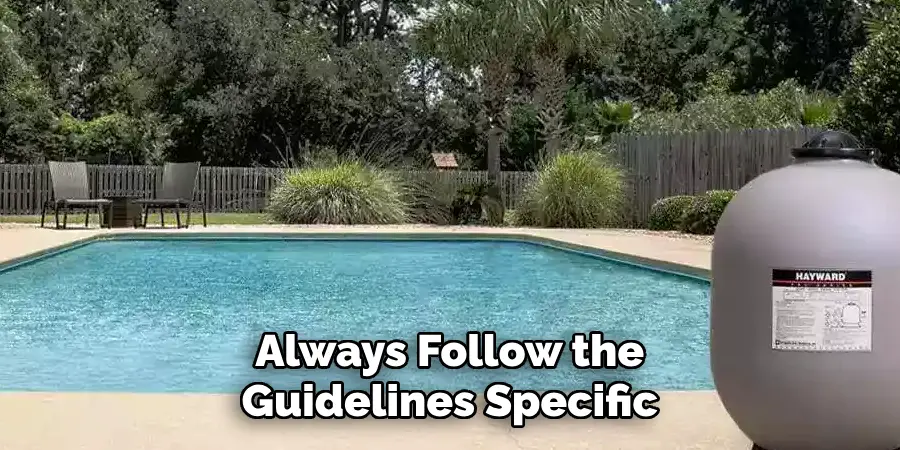
Basic tools like wrenches, pool-safe antifreeze (if necessary), and access to the manufacturer’s instructions are sufficient for most winterizing tasks. Always follow the guidelines specific to your filter model.
Conclusion
Learning how to winterize a pool sand filter is essential for maintaining the health of your pool system during the cold season. With just a few straightforward steps—draining water, cleaning the sand, securing the valve, and protecting the equipment—you can prevent damage and ensure your filter remains in peak condition.
Proactive maintenance not only extends the lifespan of your pool components but also guarantees a smoother spring start-up. Equip yourself with these best practices and enjoy the benefits of a well-cared-for sand filter.
About
Outdoor Fixes is a distinguished figure in the world of Diy design, with a decade of expertise creating innovative and sustainable Diy solutions.
His professional focus lies in merging traditional craftsmanship with modern manufacturing techniques,
fostering designs that are both practical and environmentally conscious. As the author of diy,
outdoorfixes delves into the art and science of outdoorfixes-making, inspiring artisans and industry professionals alike.
Education RMIT University
(Melbourne, Australia) Associate Degree in Design (Outdoor Fixes) Focus on sustainable design, industry-driven projects,
and practical craftsmanship. Gained hands-on experience with traditional and digital manufacturing tools, such as CAD and CNC software.
Nottingham Trent University
(United Kingdom) Bachelor’s in outdoorfixes.com and Product Design (Honors) Specialized in product design with a focus on blending creativity with production
techniques. Participated in industry projects, working with companies like John Lewis and Vitsoe to gain real-world insights.
Publications and Impact
In diy, Outdoor Fixes his insights on indoor design processes, materials, and strategies for efficient production.
His writing bridges the gap between artisan knowledge and modern industry needs, making it a must-read for both budding designers and seasoned professionals.

